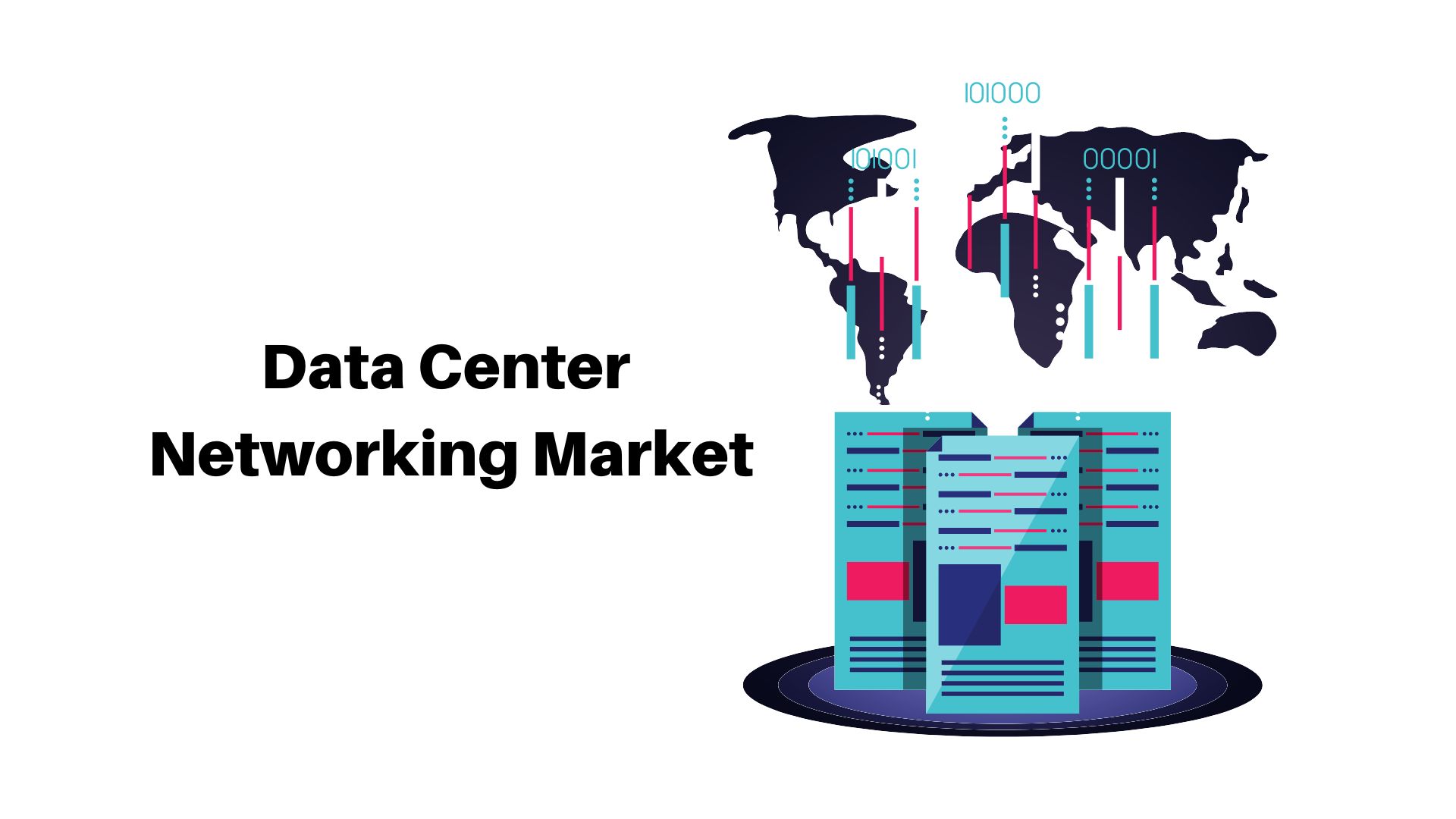Data Center Networking Market Will Anticipate Around USD 705.26 Bn by 2033

Page Contents
Market Overview
Published Via 11Press: Data center networking refers to the communication infrastructure that enables data exchange between servers, storage devices and other components within a data center. Data center networking's primary function is to provide fast and low-latency connectivity between various devices and systems within the data center, while also guaranteeing reliability, security, and scalability. Data center networking Market typically consist of three layers: the access layer, aggregation layer, and core layer. The access layer is responsible for connecting servers, storage devices and other network endpoints to the internet, offering various connectivity options such as Ethernet, Fibre Channel and InfiniBand. The aggregation layer is responsible for collecting traffic from multiple access switches and providing faster connectivity to the core layer. Finally, this core layer ensures high-speed, non-blocking connectivity between all devices within a data center.
The Global Data Center Networking market represented USD 146.05 Bn in 2022 and will anticipate around USD 705.26 Bn by 2033 projected around CAGR of 15.39% amid forecast frame of 2023 to 2033.
Data center networks typically adopt one of two architectures: traditional three-tiered designs or modern leaf-spine layouts. In a traditional three-tiered architecture, network traffic flows through the access, aggregation and core layers in an hierarchical order; each providing different levels of connectivity and resilience. A leaf-spine architecture is used in data centers, connecting all devices to a spine switch via leaf switches. This creates an extremely interconnected and scalable network with low latency and high bandwidth. Data center networks typically incorporate a range of advanced features and technologies, such as virtualization, load balancing, routing protocols, and security measures for high performance, reliability, and security. All in all, data center networking plays an integral role in modern IT infrastructure by enabling secure storage, processing, and exchange of vast amounts of data on an scalable basis.
Key Takeaways
- Data center networking refers to the communication infrastructure that enables data exchange between servers, storage devices and other components within a data center.
- The Data Center Networking market expected to reach USD 146.05 Billion in 2022.
- Forecasted compound annual growth rates between 2023 and 2033 is 15.39%.
- By 2033, the Data Center Networking market is projected to reach USD 705.26 Billion.
- Data center networking's primary purpose is to provide fast and low-latency connectivity between various devices and systems within the data center , while also guaranteeing reliability, security, and scalability.
- Data center networks typically consist of three layers: the access layer, aggregation layer and core layer.
- Data center networks typically follow one of two architectures: traditional three-tiered designs or contemporary leaf-spine layouts.
- Data center networks employ advanced features and technologies, such as virtualization, load balancing, routing protocols, and security measures, to guarantee high performance, dependability, and security.
- Data center networking is an essential element of modern IT infrastructure, allowing the secure storage, processing and exchange of vast amounts of data in a scalable and secure manner.

Get Data Center Networking Sample Report: https://marketresearch.biz/report/data-center-networking-market/request-sample/
Regional Snapshot
- North America: North America is one of the leading markets for data center networking, featuring technology giants such as Amazon, Google and Microsoft. This region stands out for its high degree of innovation within data center networking with a focus on high-speed connectivity, virtualization and software-defined networking.
- Europe: Europe is a mature market for data center networking, with an emphasis on energy efficiency and environmental sustainability. The region exhibits high standardization in this space through interoperability and open standards initiatives.
- Asia-Pacific: Data center networking in Asia-Pacific is rapidly growing due to the rising adoption of cloud computing and digital transformation initiatives. The region stands out for its focus on low-latency connectivity and high-performance computing, with major providers such as Alibaba and Tencent leading the charge.
- Latin America: Latin America is a relatively small market for data center networking, with an emphasis on improving connectivity and digital infrastructure. The region is marked by its substantial presence of telecom operators who are investing in building out data center infrastructure to meet growing demands for cloud computing and other digital services.
- Middle East and Africa: The Middle East and Africa is rapidly becoming an attractive market for data center networking, driven by its ambition to enhance connectivity and build out digital infrastructure. Characterized by increasing demand for cloud computing and other digital services, as well as energy efficiency initiatives that promote environmental sustainability, this region stands out among competitors.
Drivers
- Cloud Computing: The rise of cloud computing has created an increasing need for data center networking that can support large-scale, distributed applications and services.
- Virtualization: With the rapid adoption of virtualization technologies such as virtual machines (VMs) and containers, there has been an urgent need for more adaptable and agile data center networking solutions.
- Big data and Analytics: With the rise of big data applications, there is now a demand for data center networking that can handle large volumes of information quickly while providing quick access to storage resources.
- Internet of Things (IoT): With the explosion in IoT devices, data center networking is necessary to support large numbers of connected devices with low latency and high bandwidth connectivity.
- Software-Defined Networking (SDN): SDN is a networking architecture that separates the control plane from the data plane, offering greater flexibility and programmability in data center networking.
- Network Function Virtualization (NFV): NFV is a concept in which network functions such as firewalls, load balancers, and routers are virtualized and run on general-purpose servers to offer greater flexibility and scalability in data center networking.
- Multi-cloud Environments: Many organizations are transitioning to multi-cloud strategies, which necessitate data center networking that can connect and manage resources across multiple cloud environments.
Restraints
- Data center networks are becoming more intricate, with an ever-increasing number of devices, applications and services connected to them. This complexity makes managing and optimizing performance on the network much more challenging. The growing need for high-speed data transfer and the sheer volume of processed information can put strain on network bandwidth, leading to slower response times and diminished application performance. High latency can have an adverse effect on application performance and user experience, particularly in real-time applications like video conferencing and gaming. Data center networking also faces security threats due to increasingly sophisticated cyber attacks. To protect data and applications, strong security measures like encryption, firewalls, intrusion detection systems, and other protocols must be implemented for protection.
- Scalability in data centers has become an increasing challenge due to their growing size and complexity. To accommodate more devices and applications without sacrificing performance or reliability, networks must be able to accommodate them without compromising performance or dependability. Building and running a data center network can be costly as technology progresses and new equipment is needed. Costs include hardware, software, energy consumption and personnel resources. Furthermore , lack of standard protocols and interfaces makes integration between different components and technologies within one data center network challenging.
Opportunities
- Network engineers are accountable for designing, installing and running data center networks. This role necessitates an extensive knowledge of networking protocols, hardware components and software. Network architects create the overall structure of data center networks – including their hardware/software composition as well as security measures – while network administrators maintain and troubleshoot these same networks to guarantee they run optimally.
- Network security engineers safeguard data center networks against cyber threats by implementing security protocols and monitoring for potential breaches. Cloud network engineers specialize in designing and managing networks that support cloud computing, such as those used by Amazon Web Services (AWS), Microsoft Azure or Google Cloud Platform. NOC technicians oversee day-to-day operations of data center networks while troubleshooting issues to guarantee uptime. Data center technicians install, configure and maintain physical infrastructure such as servers, routers, switches and cabling within data centers; plus they install/configure servers/ routers/switches/cables/cabled facilities.
- Data center operations managers oversee the overall operation of data centers, including staffing, budgeting and ensuring that everything runs smoothly and efficiently. Facilities engineers take care of maintaining the physical infrastructure such as power distribution, cooling systems and fire suppression systems in data centers. Network performance engineers optimize networks within these data centers for maximum performance and efficiency using tools and techniques to monitor and enhance network performance.
Inquire with our industry specialist: https://marketresearch.biz/report/data-center-networking-market/#inquiry
Challenges
- Data center networking is an ever-evolving field, and organizations face many difficulties when designing, implementing and running their networks. Here are some of the key obstacles they must overcome. As organizations grow and their data needs expand, data center networks must be able to scale up in order to accommodate the extra demand. This can be challenging as adding new network devices and services may cause issues with latency or congestion on the network. Data center networks are a prime target for cyber attacks, making their security an ongoing priority. To stay ahead of evolving threats, networks must be continuously upgraded and improved with appropriate measures in place. As data center networks become busiest, network congestion can become a serious issue. This can result in decreased performance and delayed application response times.
- Data center networks must be highly reliable, with minimal downtime or service disruptions. To achieve this goal, careful planning and implementation of redundancy and failover mechanisms is necessary. Data center networks often consist of a variety of devices and technologies, making it difficult to ensure that these components work together seamlessly. Data center networks can be intricate, with many devices and services interconnected in various ways. To effectively manage such complexity requires advanced network management tools and processes. Establishing and running data center networks can be expensive, especially for organizations with large-scale data requirements. Juggling performance requirements with costs of implementation and upkeep is a constant struggle.
Market Segmentation
Component
- Hardware
- Ethernet Switches
- Network Security Equipment
- Storage Area Network SAN Routers
- Servers
- Others
- Software
- Switching Operating System OS
- Virtual Switches
- Management Software
- Controller
- Services
- Installation
- Management and Consulting
Industry Vertical
- Telecommunications
- Government
- Retail
- Media and Entertainment
- BFSI
- Healthcare
- Education
- Others
Key Players
- Cisco Systems, Inc.
- Hewlett Packard Enterprise
- Arista Networks
- Juniper Networks
- Microsoft Corporation
- Huawei Technologies Co. Ltd.
- Dell Inc.
- Avaya Inc.
- Extreme Networks Inc.
- Brocade networking solutions
Report Scope
| Report Attribute | Details |
| Market size value in 2022 | USD 146.05 Bn |
| Revenue forecast by 2033 | USD 705.26 Bn |
| Growth Rate | CAGR Of 15.39% |
| Regions Covered | North America, Europe, Asia Pacific, Latin America, and Middle East & Africa, and Rest of the World |
| Historical Years | 2017-2022 |
| Base Year | 2022 |
| Estimated Year | 2023 |
| Short-Term Projection Year | 2028 |
| Long-Term Projected Year | 2033 |
Growing Demand => Request for Customization
Recent Developments
- Software-defined Networking (SDN): SDN has become a key technology in data center networking, allowing network administrators to manage traffic dynamically via software. This boosts efficiency and scalability while providing centralized network management.
- Network Function Virtualization (NFV): NFV allows network functions like firewalls and load balancers to be implemented as software instead of physical hardware, leading to cost savings and improved scalability.
- Cloud networking: Cloud networking enables data centers to take advantage of cloud resources for improved efficiency and scalability. This could include using cloud-based services like load balancing or content delivery networks (CDNs) in order to enhance performance while cutting costs.
- Edge Computing: Edge computing has emerged as a crucial technology for optimizing real-time applications such as IoT and video streaming. By processing data closer to its source, edge computing can reduce latency and enhance performance.
- Network Automation: Network automation has become a crucial aspect of data center networking, allowing administrators to automate repetitive tasks such as configuration and monitoring. Doing so can reduce errors and enhance network stability.
- 5G Networking: The deployment of 5G networks is expected to have a significant effect on data center networking , providing faster and more dependable connectivity for mobile devices and IoT gadgets.
- AI-Driven Network Management: Artificial intelligence (AI) is being employed to optimize network performance by analyzing network data and anticipating traffic patterns. This can enhance efficiency, reduce downtime , and boost security on the network.
Key Questions
What is data center networking?
Data center networking refers to the design, implementation and management of a network infrastructure that links devices, applications and services within a data center.
What are some of the key challenges facing data center networking?
Some of the primary obstacles include network complexity, bandwidth limitations, latency, security, scalability and cost management as well as standards/interoperability issues.
What are some of the recent advancements in data center networking?
Recent innovations include software-defined networking (SDN), network function virtualization (NFV), cloud networking, edge computing, automation of networks, 5G networking and AI-driven network management.
How can software-defined networking (SDN) improve data center networking?
SDN simplifies data center networking by giving network administrators the power to manage traffic dynamically through software, increasing efficiency and scalability. SDN also enables centralized network management, making it simpler to configure and monitor the network.
What is edge computing and how does it relate to data center networking?
Edge computing refers to processing data closer to its source rather than in centralized data centers, which can reduce latency and enhance performance for real-time applications like IoT or video streaming. When combined with data center networking, edge computing creates a more efficient and scalable network architecture.
Contact Us
Contact Person: Mr. Lawrence John
Marketresearch.Biz (Powered By Prudour Pvt. Ltd.)
Tel: +1 (347) 796-4335
Send Email: [email protected]
The team behind market.us, marketresearch.biz, market.biz and more. Our purpose is to keep our customers ahead of the game with regard to the markets. They may fluctuate up or down, but we will help you to stay ahead of the curve in these market fluctuations. Our consistent growth and ability to deliver in-depth analyses and market insight has engaged genuine market players. They have faith in us to offer the data and information they require to make balanced and decisive marketing decisions.



